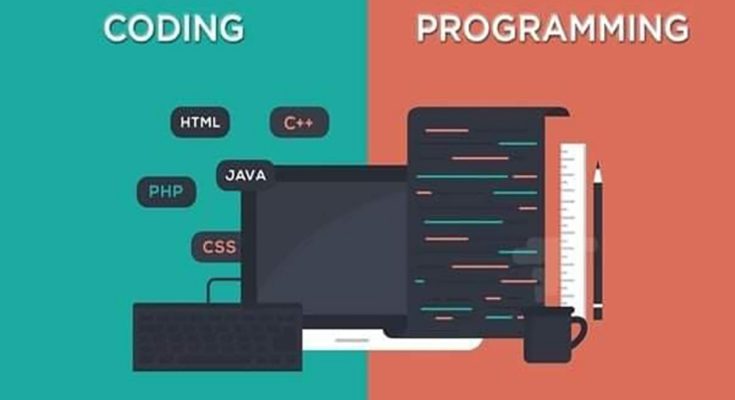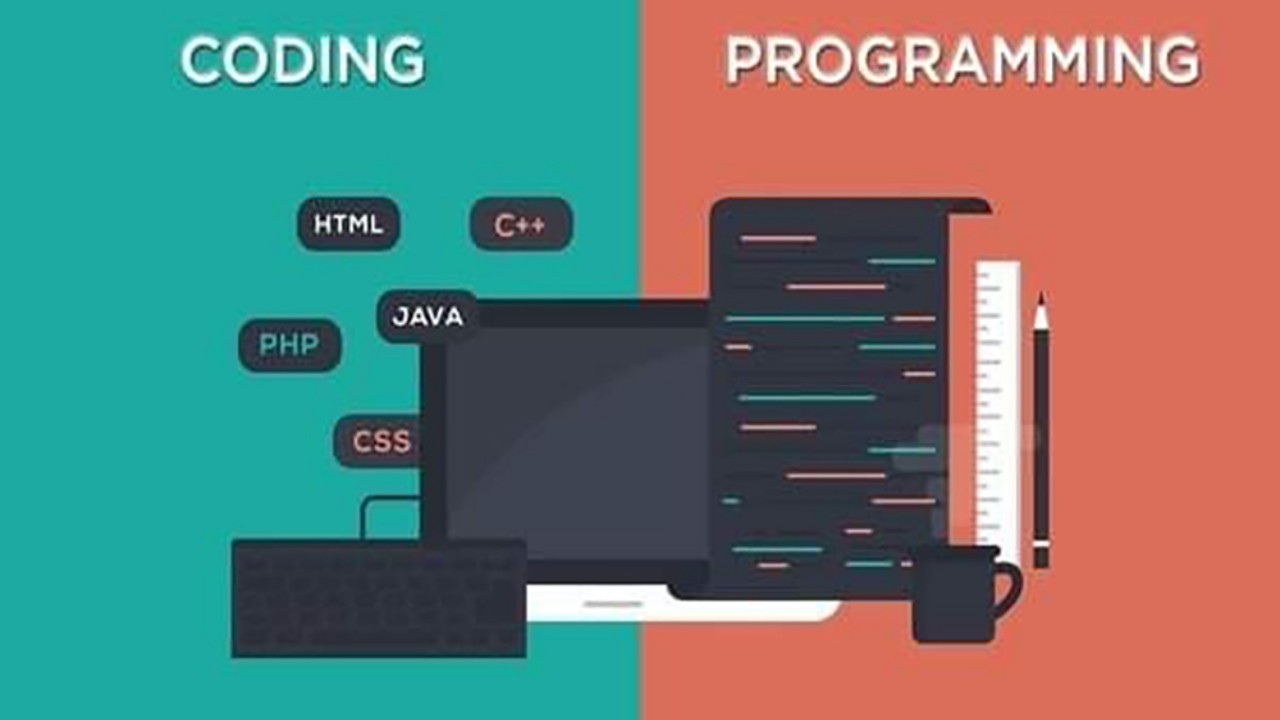In the tech world, the terms “coding” and “programming” are often used interchangeably, but they’re not quite the same. While both are integral to creating software, apps, and systems, they encompass different aspects of the software development process. Whether you’re an aspiring developer, a tech enthusiast, or simply curious, understanding the distinction between coding and programming can help you better navigate the digital landscape.
This article will explore what coding and programming entail, how they differ, and why both are crucial in technology development.
What is Coding?
At its core, coding is the act of writing instructions in a language that computers can understand. Think of it as translating human intentions into a format that machines can execute. Coding is a fundamental part of the software development process and typically focuses on:
- Writing Code: Using a specific programming language (like Python, Java, or C++) to create instructions for the computer.
- Syntax Mastery: Following precise syntax rules for the chosen language to ensure the code runs without errors.
- Debugging: Identifying and fixing syntax errors or small bugs that may prevent the code from running as intended.
Key Responsibilities of a Coder
- Translating requirements into executable code.
- Writing clean, concise, and error-free scripts.
- Testing small sections of functionality to ensure they work correctly.
Coding is often seen as the first step in creating a digital product. For example, writing a simple script to calculate the sum of two numbers or building the structure of a webpage using HTML involves coding.
What is Programming?
Programming, on the other hand, is a broader and more complex process. It involves not just writing code but also planning, designing, testing, and maintaining software or systems. Programming is the “big picture” approach to creating technology solutions, which may include coding as a subset. Programming tasks often include:
- Algorithm Development: Designing step-by-step solutions to solve specific problems.
- Systematic Thinking: Planning the architecture of a program or system, including its functionality and user interactions.
- Debugging and Testing: Identifying, analyzing, and resolving bugs on a larger scale.
- Deployment and Maintenance: Ensuring the program runs smoothly post-launch and updating it as needed.
Key Responsibilities of a Programmer
- Planning software architecture and user flows.
- Writing and optimizing code for scalability and efficiency.
- Testing the program across different scenarios to ensure reliability.
- Collaborating with teams to manage large projects.
Programming goes beyond syntax to focus on solving problems and creating robust systems. For example, designing an entire e-commerce platform—from database management to user interface functionality—falls under programming.
Coding vs. Programming: The Key Differences
While coding and programming share similarities, their differences become apparent when examining their scope, skillsets, and goals.
1. Scope
- Coding: Focuses on translating logical instructions into a programming language. It’s a narrower task that deals with writing code snippets or small programs.
- Programming: Encompasses a wide range of tasks, including coding, planning, debugging, and system design. It’s a more comprehensive and strategic approach.
2. Skill Level
- Coding: Requires knowledge of specific programming languages and an understanding of their syntax and basic logic. Coders typically work on isolated tasks.
- Programming: Demands a deeper understanding of algorithms, data structures, and software design principles. Programmers often manage entire projects or systems.
3. Tools and Environments
- Coding: Coders rely on text editors, Integrated Development Environments (IDEs), and compilers to write and test their code.
- Programming: Programmers use additional tools like version control systems (e.g., Git), software development kits (SDKs), and testing frameworks to manage and streamline the development process.
4. Output
- Coding: Produces functional code for specific tasks, such as creating a login form or calculating interest.
- Programming: Delivers complete, functional systems or software applications, such as a banking app or a video game.
Why Both Are Essential
Both coding and programming play crucial roles in software development. Here’s why:
- Coding: Acts as the building block. Without clean and efficient code, even the best program designs can fail to execute properly.
- Programming: Brings the vision to life. It ensures the code integrates seamlessly into a larger system and aligns with user needs and project goals.
Real-World Examples
To better illustrate the distinction, let’s consider some real-world scenarios:
Example 1: Building a Weather App
- Coding: Writing a script to fetch real-time weather data from an API and display it on the screen.
- Programming: Designing the entire app, including user interface (UI), backend integration, and functionality like notifications for severe weather alerts.
Example 2: Developing a Website
- Coding: Creating individual pages using HTML, CSS, and JavaScript.
- Programming: Building a full-stack website with a database, authentication system, and responsive design for various devices.
Common Misconceptions
Several myths surround the terms “coding” and “programming.” Let’s clear up a few:
- Misconception: Coding is less important than programming.
- Reality: Coding is foundational and indispensable in any programming project.
- Misconception: Coding and programming are entirely separate skills.
- Reality: Coding is a subset of programming, and both overlap significantly in practice.
- Misconception: Coders can’t transition to programming.
- Reality: Many coders evolve into programmers as they gain experience and expand their skillsets.
Learning Paths: Where to Start
If you’re new to the tech world, understanding whether to focus on coding or programming can help shape your learning journey. Here’s a recommended path:
- Start with Coding:
- Learn a beginner-friendly language like Python or JavaScript.
- Practice writing simple programs, such as calculators or to-do lists.
- Explore online resources and coding bootcamps.
- Progress to Programming:
- Study algorithms, data structures, and software design principles.
- Work on larger projects to understand how different components interact.
- Learn tools like Git, Docker, and testing frameworks to streamline workflows.
The Future of Coding and Programming
As technology evolves, so do the roles of coders and programmers. Emerging fields like artificial intelligence (AI), blockchain, and quantum computing are reshaping how code is written and systems are developed. Here’s what the future may hold:
- Automation: AI tools like GitHub Copilot are already assisting coders by suggesting code snippets. Programmers may shift towards overseeing automated processes.
- Specialization: Coders and programmers may specialize further, focusing on fields like cybersecurity, machine learning, or cloud computing.
- Increased Accessibility: Low-code and no-code platforms are making programming accessible to non-technical users, further blurring the lines between coding and programming.
Conclusion
Coding and programming are two sides of the same coin, each playing a vital role in the software development process. While coding involves writing the instructions that machines execute, programming encompasses a broader scope, including planning, designing, and optimizing entire systems. Whether you’re just starting or aiming to expand your skills, understanding these distinctions can guide you towards a successful career in technology. So, is coding the same as programming? Not exactly—but both are essential to powering the digital world.





